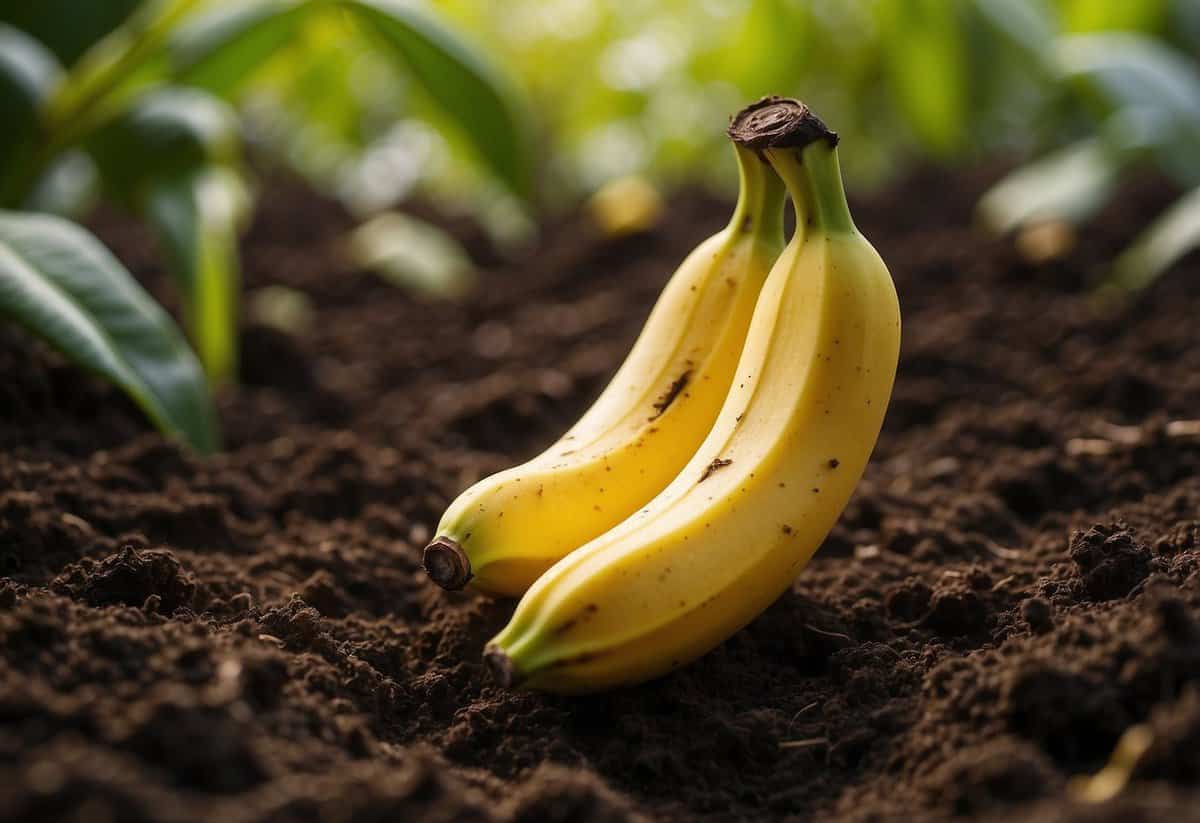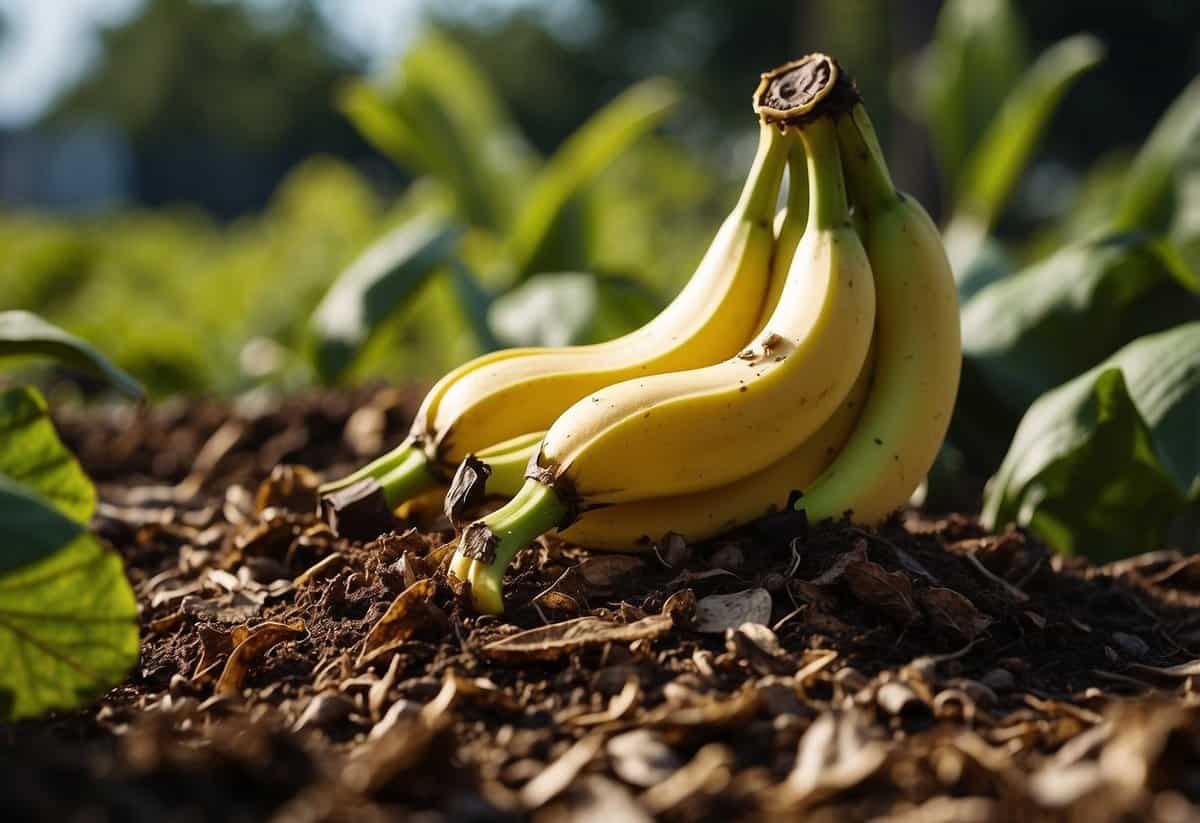What Are the Disadvantages of Banana Peels as Fertilizer? Key Insights and Tips
Using banana peels as fertilizer might sound like an easy and natural way to boost your garden. While banana peels do contain essential nutrients like potassium, phosphorus, and calcium, there are important drawbacks to consider. Fresh banana peels contain over 80% water, which means the concentration of nutrients they provide is relatively low compared to regular fertilizers.

In addition, using banana peels can attract pests and bacteria, potentially causing more harm than good. When left to decompose on the soil surface, these peels can become a breeding ground for unwanted insects, making plants more vulnerable.
Banana peels also take a while to break down, meaning nutrients are not released as quickly. This slow decomposition can lead to nutrient imbalances, affecting your plants’ growth and overall health. For more on the limitations of banana peels, refer to this detailed guide on the disadvantages of banana peel liquid fertilizer.
Nutrient Profile and Soil Health

Banana peels can contribute essential nutrients such as potassium and calcium to your soil. However, managing their effect on soil pH and microbial balance is important to prevent potential drawbacks.
Understanding Nutrient Impact on Soil
Banana peels contain nutrients like potassium, calcium, and small amounts of phosphorus and nitrogen. Potassium is crucial for plant health, aiding photosynthesis and water regulation. However, the nutrient content in banana peels is relatively low. This means you may need other fertilizers to meet all your soil’s needs.
Using a soil test can help you determine if your soil lacks specific nutrients. This way, you can tailor your fertilization plan. Keep in mind that banana peels decompose slowly, releasing nutrients gradually, which might not be sufficient for fast-growing plants.
Balancing Soil pH
Banana peels can slightly alter the soil pH as they decompose. However, the change is minimal and usually won’t significantly impact soil health. Banana peels are more likely to maintain a neutral to slightly acidic pH range, which is ideal for most plants.
If your soil is already acidic or alkaline, adjusting the pH may be necessary before adding banana peels. Over time, consistent addition of organic matter can help stabilize pH levels. To avoid unwanted pH fluctuations, you should regularly monitor your soil’s pH, especially if you rely on natural fertilizers like banana peels.
Effects on Microbial Balance
When you add banana peels to the soil, they attract beneficial microbes that aid in decomposition. These microbes break down organic matter, enriching the soil with nutrients. However, decomposing peels can also attract pests like fruit flies and gnats, which may disrupt soil health.
Healthy microbial activity is essential for nutrient cycling and plant health. To maintain a balanced microbial community, mix banana peels with other organic materials in your compost. This diverse mixture supports a variety of beneficial microorganisms while reducing the chance of pest attraction.
Ensuring a balanced and healthy soil environment involves understanding how banana peels interact with your soil’s pH and microbial communities. Regular soil tests and careful monitoring can help you use banana peels effectively in your garden.
Disadvantages in Pest and Disease Management

Using banana peels as fertilizer can attract unwanted pests and pose risks of fungal infections. Understanding these disadvantages can help you manage your garden more effectively.
Attracting Pests and Insects
Banana peels have a high sugar content. This sweetness attracts various pests such as fruit flies, gnats, and ants. These insects are drawn to the sugary residue left by decomposing banana peels, which can lead to an infestation in your garden.
Additionally, rats and other rodents might be attracted to the banana peels, adding another layer of pest management challenges. The presence of such pests can affect plant health and compromise the growth of your crops.
To reduce these risks, you could bury the peels deeper in the soil or use them in a controlled composting system. This practice might help mitigate attracting pests but won’t eliminate the risk entirely.
Fungus and Disease Risks
Banana peels can also contribute to fungus growth. The moisture from decomposing peels creates a damp environment, ideal for fungal spores to thrive. This can lead to infections that affect the roots and soil health, harming your plants.
Diseased banana peels can even introduce new pathogens to your garden. If the banana peels carry any disease, it can quickly spread to your plants, causing further damage.
To minimize these risks, make sure banana peels are well-composted before use. This process can help kill off harmful pathogens and fungi, ensuring a safer environment for your plants.
Practical Challenges in Application

Using banana peels as fertilizer presents practical challenges including effective preparation techniques and specific considerations needed when using them for indoor and potted plants.
Preparing Banana Peels Effectively
Properly preparing banana peels for use as fertilizer can be a bit tricky. One method involves creating a banana peel water or tea. To do this, you need to soak banana peels in a glass jar filled with water and let it sit for a few days to ferment.
After fermentation, you must strain the mixture to separate the solids from the liquid. This banana peel water should then be diluted with a 1:5 ratio (one part banana peel water to five parts water). This step is crucial to avoid harming your plants with too strong a concentration.
Making compost out of banana peels is another effective option. This involves cutting the peels into small pieces and allowing them to decompose along with other organic materials. Ensuring the peels are well-mixed helps speed up the composting process.
Considerations for Indoor and Potted Plants
Banana peels can be very beneficial for houseplants and plants in pots, but there are specific considerations you need to keep in mind. When using banana peel liquid fertilizer on potted plants, be careful not to over-water. Too much moisture can lead to root rot in confined spaces.
If you prefer to use banana peel compost, evenly mix the compost into the soil to avoid creating hotspots with too much concentration of nutrients.
Using banana peel water for indoor plants requires proper dilution. The smaller size of pots means the roots can become easily overwhelmed by undiluted or strong fertilizers. Ensuring you use a diluted solution helps maintain the health of your houseplants without causing stress to the plants.
Environmental and Safety Considerations

Using banana peels as fertilizer has both pros and cons, especially when it comes to environmental impact and safety around your home and garden.
Eco-Friendly Gardening Practices
Banana peels are a form of organic fertilizer. They break down naturally and add nutrients back to the soil. This makes them a choice for sustainable gardening.
However, there are environmental concerns. When used in large quantities, banana peel liquid fertilizer can cause uneven nutrient distribution. This means some plants might get too much potassium while others get too little.
There’s also the risk of contamination. If not properly prepared, banana peels can introduce pathogens into your garden. These pathogens can harm your plants and may spread to other areas.
Safe Use Around Home and Garden
When using banana peels as fertilizer, you need to be cautious. Make sure to avoid using too much at once. Over-fertilizing can harm your plants. It’s better to apply small amounts frequently rather than a lot at once.
If you use banana peel liquid fertilizer, be careful where you apply it. Spilling it on walkways can make them slippery and dangerous. Keep it away from places where pets or small children play.
Another concern is the potential for attracting pests. Banana peels can attract fruit flies and other insects. Always bury banana peels well under the soil to minimize this risk.
Taking these precautions ensures that you can enjoy the benefits of banana peel fertilizer safely and sustainably.
Comparative Efficacy and Cost

Banana peels can be a good fertilizer, but you might wonder how they compare in effectiveness and cost to other organic amendments like eggshells or coffee grounds, and even commercial fertilizers.
Comparing with Other Organic Amendments
Banana peels offer a significant amount of potassium, which is essential for plant growth. However, they might not provide a well-balanced compost alone. When you compare them with eggshells and coffee grounds, you find that each has unique benefits.
For instance, eggshells are rich in calcium, which helps strengthen cell walls in plants. Coffee grounds, on the other hand, are high in nitrogen, promoting leaf growth. Unlike these, banana peels primarily boost potassium levels.
Using banana peels, you might need to combine them with other organic materials to meet all nutrient requirements. This way, you create a more balanced compost that benefits your garden more effectively.
Economic Factors in Using Banana Peels
Considering cost, using banana peels as a fertilizer can be very cost-effective. If you already consume bananas, it’s a great way to recycle kitchen waste. This contrasts with commercial fertilizers, which can be fairly expensive.
You don’t need to purchase additional materials. Simply collect your banana peels, cut them into small pieces, and add them to your compost pile. This low-cost approach can be attractive, especially for home gardeners.
However, you should consider that the process of breaking down banana peels takes time. If you need immediate nutrient availability, commercial fertilizers might be more efficient. Balancing time, cost, and nutrient needs will help you decide the best approach for your garden.







